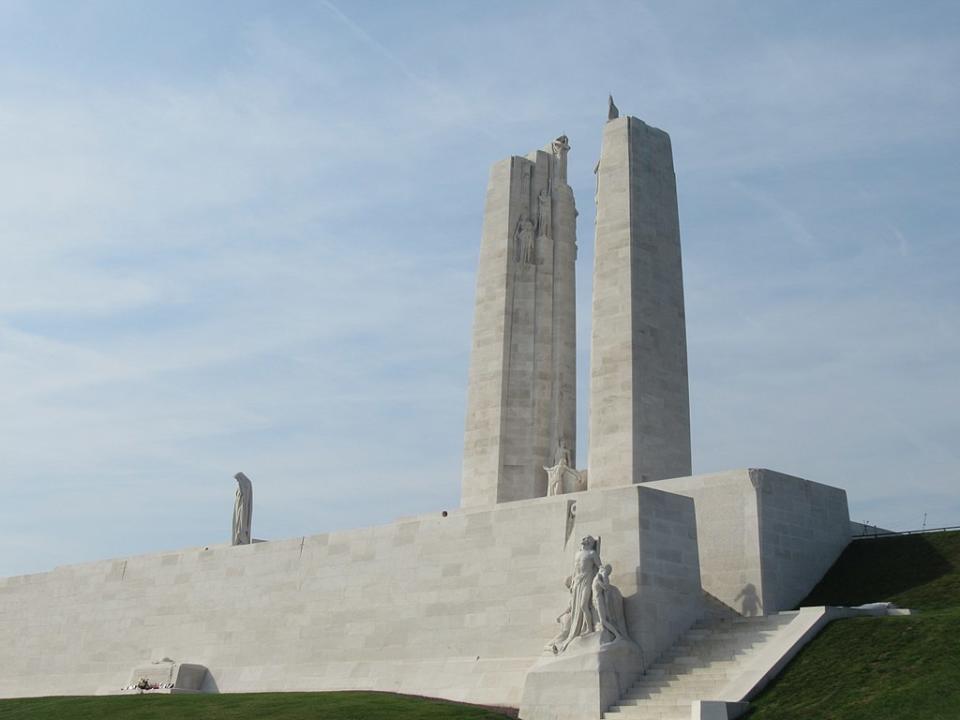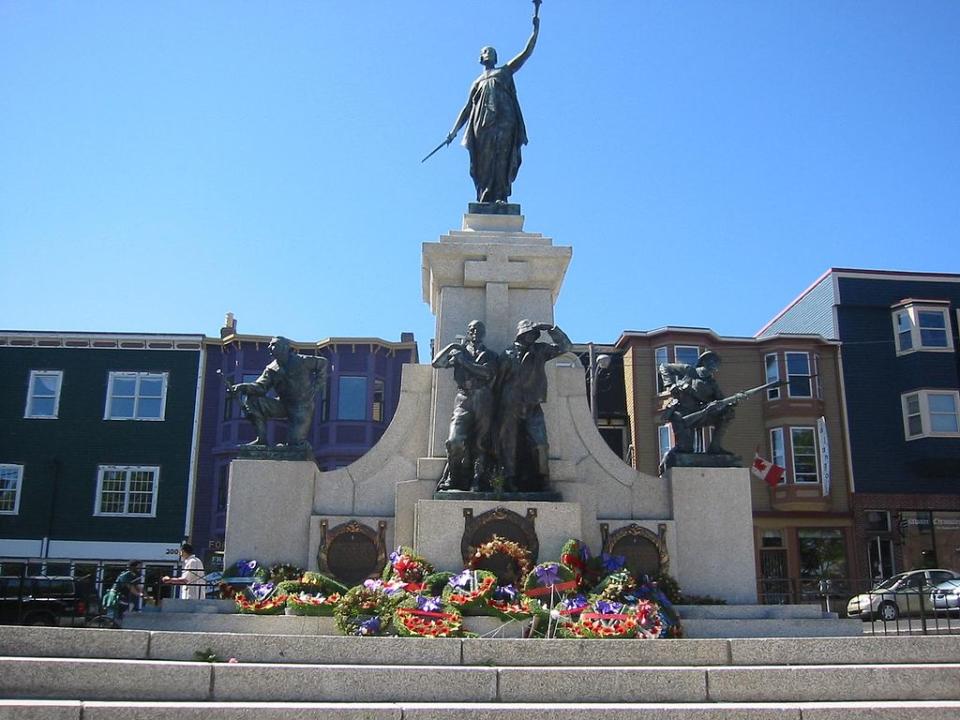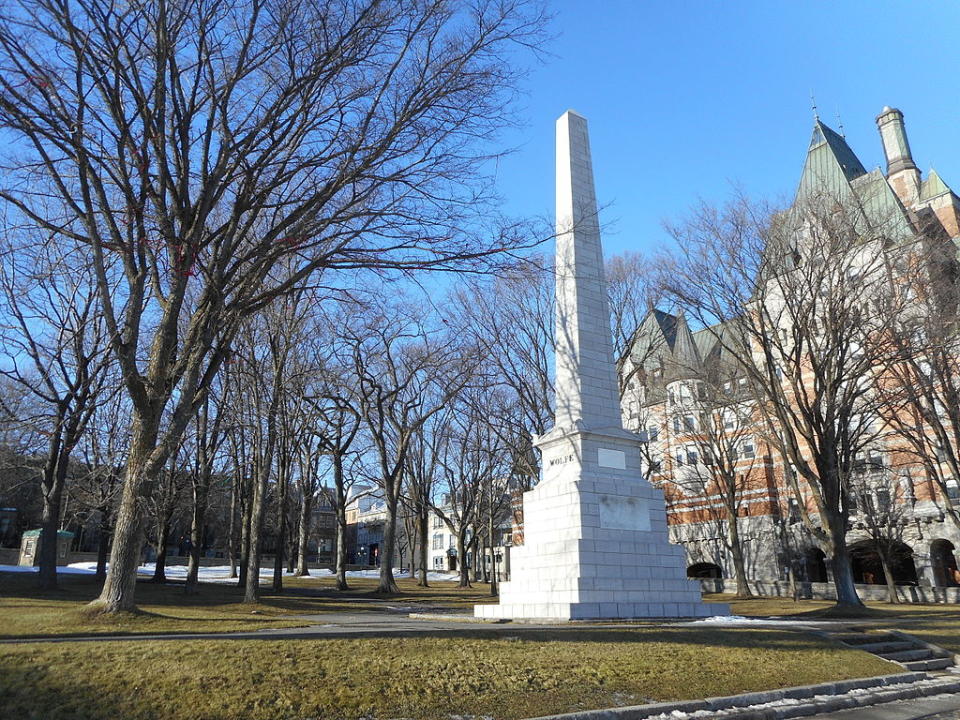In Remembrance: Canada's war memorials

November 11, Remembrance Day, is commemorated across Canada, regardless of weather.
Though arising out of the day of the armistice that brought an end to the First World War in 1918, it has since grown to encompass all of the conflicts since then, and Canadians who fell from Europe to Korea to the Middle East and elsewhere are remembered on that day.
Here is a small selection of the hundreds of memorials in Canada, and beyond, where Canada's fallen soldiers are commemorated.
NATIONAL WAR MEMORIAL, OTTAWA

Image: Veterans Affairs Canada/Heritage Canada
Though Remembrance Day commemorations are held across Canada on November 11, the National War Memorial in Ottawa is the site of the national ceremony, usually attended by the prime minister and Governor General.
With the slaughter of the First World War still fresh in the public’s mind, an international competition was launched in 1925 to design an appropriate memorial to Canada’s war dead, but it wasn’t until 1939 when it was unveiled by King George VI.
If there were any hopes that the memorial, and others like it around the world, were enough to encourage a future peace, they were dashed by the outbreak of the Second World War that same year. Other wars would follow, and the monument rededicated several times to those who fell in them: Second World War and Korean War (in 1982), the Unknown Soldier (whose tomb was added in 2000), the South African War of 1899-1902 and Afghan War of 2001-2014 (in 2014).
VIMY MEMORIAL

Image source: Wikimedia Commons.
Arguably the most famous Canadian war memorial is located not in Canada, but in the north of France.
The First World War was Canada’s first real trial by fire, and the nation sent some 600,000 soldiers to fight in Europe. 66,000 would lose their lives, many of whom fell at the battle of Vimy Ridge in April 1917, a key fight that cemented Canada’s reputation as a warrior nation.
A fitting memorial was needed, and after an 11-year construction period that took 11,000 tonnes of concrete, 6,000 tonnes of limestone and hundreds of tonnes of steel, the Canadian National Vimy Memorial was unveiled in 1936.
It was rededicated by Queen Elizabeth in 2007, and remains one of only two National Historic Sites outside of Canada’s borders (the other, at Beaumont-Hamel in France, commemorates Newfoundland soldiers who died in the First World War).
NEWFOUNDLAND NATIONAL MEMORIAL

Image: Wikimedia Commons
Though now a Canadian province, Newfoundland was a separate British dominion at the time of the First World War, with its small population punching above its weight in both that conflict and the Second World War that was to come.
That explains why the memorial in Downtown St. John’s maintains the name ‘National War Memorial.’ It was erected in 1924, a quarter-century before Newfoundland joined Confederation.
Aside from Remembrance Day, ceremonies are also held there to commemorate the Battle of the Somme, where hundreds of Newfoundlanders lost their lives.
HALIFAX MEMORIAL

Image: Veterans Affairs Canada
The Atlantic Ocean was a key and long-running battlefield of both the First and Second World Wars, which claimed the lives of thousands of Canadian sailors.
The Halifax Memorial, in Point Pleasant Park, commemorates the 3,267 sailors of Canada and Newfoundland, then a separate dominion, who were lost at sea. It was originally built in 1924, with some 415 names inscribed, and 2,852 more were added after the Second World War.
The first Halifax Memorial stood at Citadel Hill, but after it had deteriorated, it was replaced with the new memorial in the 1960s.
COMMONWEALTH AIR TRAINING PLAN MUSEUM, BRANDON, MAN.

Image: Al/Flickr. Link to license.
The Second World War was when air combat really came into its own, with all the human cost that entails.
Tens of thousands of pilots across the British Commonwealth manned the planes of the war, more than 19,000 of whom lost their lives. Their names are etched in the 100 metres of black granite slab of Commonwealth Air Training Memorial at the Brandon Municipal Airport in Manitoba. The enormous monument also includes an eight-foot-tall bronze pilot statue, and a 20-metre RCAF wing in full colour.
MONTCALM-WOLFE MONUMENT, QUEBEC CITY

Image: Jean Gagnon/Wikimedia Commons.
Canada has many monuments commemorating those who fell in the wars of the 20th Century. But the conflicts of Canada predate Confederation, and this monument commemorates one of the most fateful.
The Montcalm-Wolfe Monument, in the shadow of the Chateau Frontenac in Quebec City, is the oldest war memorial in Quebec, and the second oldest in all of Canada. It is named for General James Wolfe and General Louis-Joseph de Montcalm, who commanded the British and French forces at the Battle of Plains of Abraham in 1759.
Though both men fell in battle, the British carried the day, and Quebec passed into the British Empire, later becoming one of the core provinces of the future Dominion of Canada.
RECONCILIATION: THE PEACEKEEPING MONUMENT

Image: Wikimedia Commons.
Canadian troops have served under U.N. colours since the Korean War, and in the wake of the 1956 Suez Crisis, the country’s name became synonymous with peacekeepers -- not just fighting the war, but laying the groundwork for a lasting peace.
The first peacekeeping force, proposed by future Canadian prime minister Lester B. Pearson, was established after the crisis, and since then, Canadian peacekeepers have served around the world in conflict zones in the Middle East, Africa, and Europe.
The National Peacekeeping Monument in Ottawa, depicting three peacekeepers, stands in Ottawa to honour not only those peacekeepers who have fallen, but also those who continue to serve.
SOURCES: Veterans Affairs Canada | Canadian Encyclopedia

